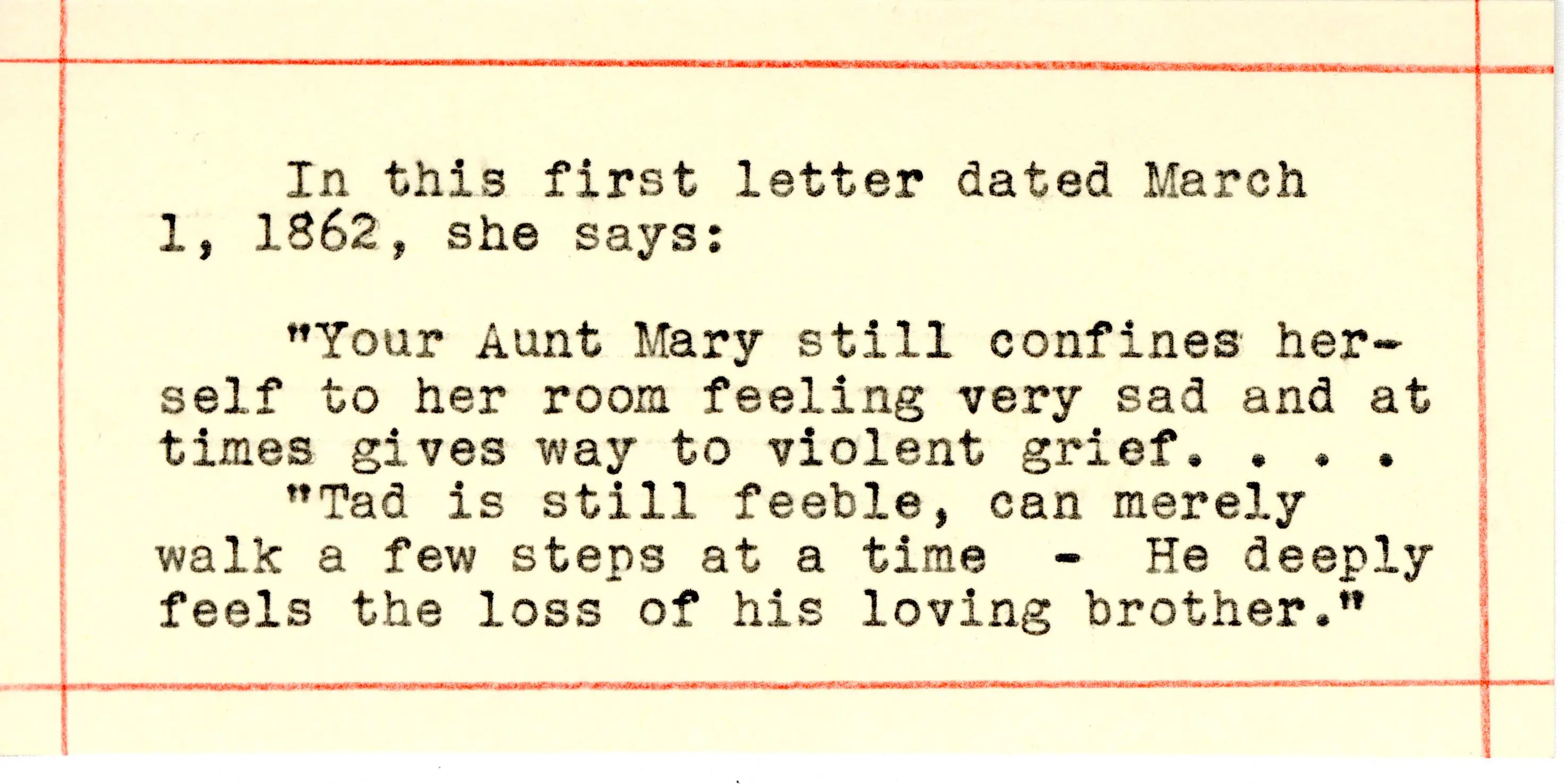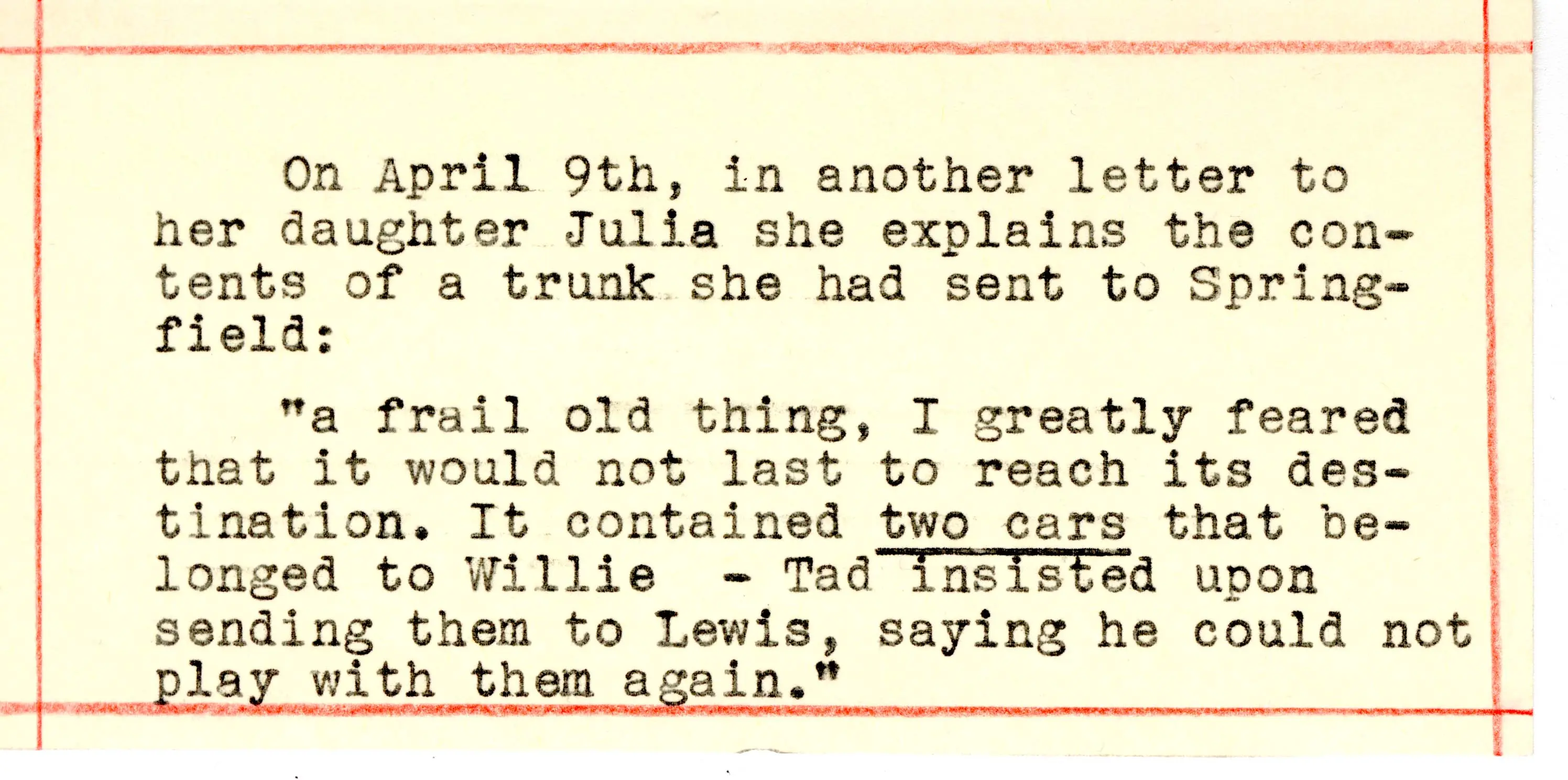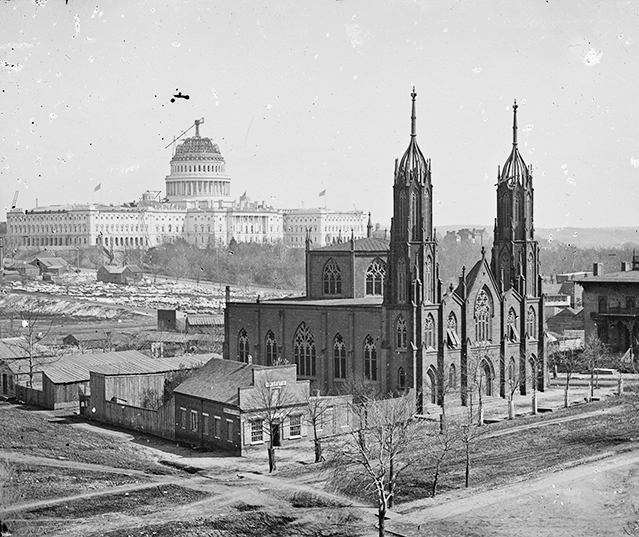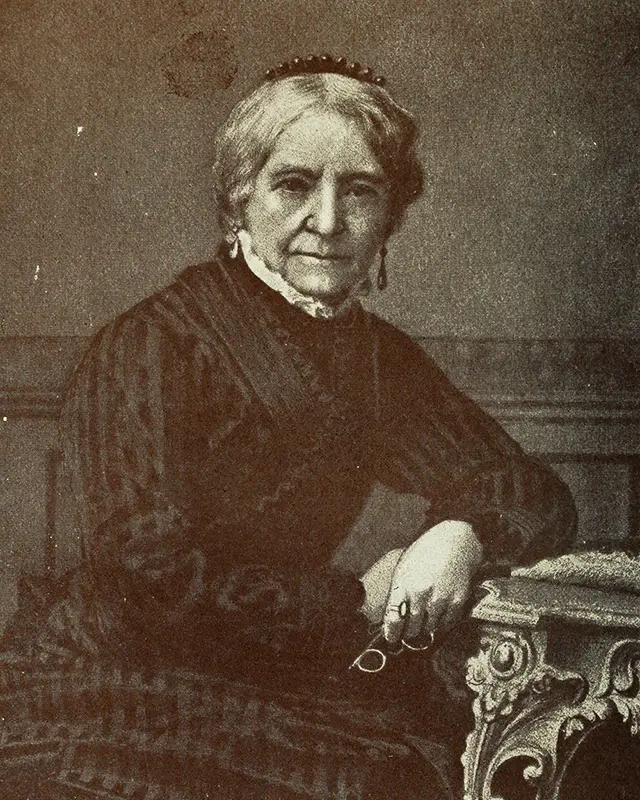By Michelle Miller
William Wallace Lincoln – more fondly known as Willie to his family – died on February 20, 1862, just a few months after his eleventh birthday. The Lincoln family were overcome by grief, deeply mourning the beloved third child. While both parents grieved heavily, the pain was especially difficult for Mary. For weeks after Willie’s death, she barely got out of bed, consumed by outpourings of sorrow. The grief and trauma would become a turning point in Mary’s personality.
 Willie Lincoln
Willie Lincoln
Robert Lincoln, seeing that his parents needed emotional support, called on his aunt, Elizabeth Edwards, to come to Washington and help soothe them. Elizabeth, the oldest of the Todd children, had a somewhat troubled relationship with both the Lincolns. However, Mary and Elizabeth shared a close bond, with Mary stating later in her life that she viewed her older sister as “a sort of mother”.
Elizabeth answered the call and arrived the day after Willie’s funeral. She would stay for several months, and while she was in Washington, she wrote frequently to her eldest daughter and son-in-law, Julia and Edward Baker. The ALPLM owns several of these letters, which reveal both Elizabeth’s state of mind as well as the importance of her role in helping the Lincolns recover from their loss.
What she found was an Abraham Lincoln simultaneously grieving and leading America through its greatest crisis, Mary Lincoln absolutely shattered by her loss, and young Tad Lincoln trying to understand what had happened while healing from the same illness that took his beloved brother.
Writing to Julia on March 2, Elizabeth described what had occurred in the week since her arrival. She had assisted in nursing “little sick Tad,” who was “very prostrated with his illness, and subdued with the loss.” Still, she noted his improvement, writing that he was “quite out [of] danger, even convalescent...”
Meanwhile, she emphasized that Mary had not spent much time with her youngest son, and that she was “utterly unable to control her feelings.” Elizabeth seemed to believe her presence was helpful, and that it “tended very much to soothe, the excessive grief, that natures such as your Aunt’s experience.” After arriving, she told Julia that she had persuaded her sister to get out of bed and “put on the black dress, that so freshly and painfully reminded of the loss.”
 A printed reproduction of a painting of Elizabeth Edwards (Courtesy of the Lincoln Financial Foundation Collection)
A printed reproduction of a painting of Elizabeth Edwards (Courtesy of the Lincoln Financial Foundation Collection)
Her later letters would continue in a similar vein, describing the grief that endured in the White House over the following weeks. Another letter to Julia, apparently from later in March, noted that “your Aunt Mary still confines herself to her room, feeling very sad and at times gives way to violent grief. She is so constituted … [for] a long indulgence of such gloom.”
Tad was also still struggling, as Elizabeth wrote in the same letter that he could “merely walk a few steps at a time,” and that he was still feeling the loss of his brother and companion deeply. This was also shown in a letter of April 9 when she wrote that she was sending her grandson two toys that Tad insisted on giving away because they had belonged to Willie and “he could not play with them again.”

 Highlights from two of Elizabeth Edwards's letters home to family in Springfield
Highlights from two of Elizabeth Edwards's letters home to family in Springfield
Despite the solemn reason for her visit, Elizabeth’s time in Washington was not entirely gloomy. She spent time finding flowers to send to Springfield for the family gardens, and described driving around Washington with the President, who seemed grateful for her company. She also enjoyed visiting different sites in and around Washington, such as the Capitol building and George Washington’s home at Mount Vernon, and her letters describe the pleasure she took in meeting with acquaintances in the city.
 Some of the sights Edwards would have seen while touring Washington, including the Capitol dome under construction. (Courtesy of the Library of Congress)
Some of the sights Edwards would have seen while touring Washington, including the Capitol dome under construction. (Courtesy of the Library of Congress)
However, Elizabeth’s letters also show clear signs of homesickness and worry over her own children and grandchildren. In the final letter in ALPLM’s collection, dated April 26, she wrote that she had grown tired of life in Washington, and that “the truth is I am not very happy ...”
Elizabeth’s presence was still clearly appreciated by the Lincolns, as she stated in a letter from March that she was “satisfied that my presence is more soothing, than anything else, at present.” In her letter of April 17, she said the Lincolns did not want her to leave and Mary Lincoln felt “she cannot again be alone.” Elizabeth would reinforce this when she later told William Herndon that the president “begged me with tears in his eyes to remain longer” when she discussed leaving Washington.
In several of her letters, Elizabeth had attempted to have their niece, Mary Wallace, come to Washington to take her place in supporting the family and keeping Mary Lincoln company. She urged Julia to assure the younger Mary that she would be “treated with the greatest kindness... and the dependence upon [her] for sympathy, will insure her considerate treatment.” Nonetheless, Mary Wallace did not end up coming to Washington.
Elizabeth left in early May, returning to Springfield with no doubt that her visit had provided comfort to a grieving family.
 An illustration of Edwards in her later years, from the book “Mary, Wife of Lincoln”
An illustration of Edwards in her later years, from the book “Mary, Wife of Lincoln”
Elizabeth Edwards’s letter are available to researchers at the Library.
Miller is the ALPLM’s former manuscripts librarian.